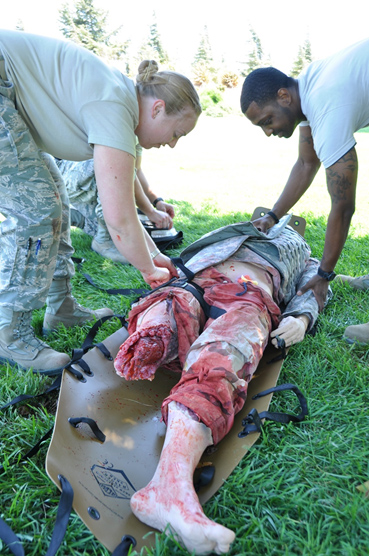In recent U.S. military conflicts in Iraq and Afghanistan, lower extremity wounding has risen with insurgent or terrorist use of improvised explosive devices. These complicated wounding patterns involve limb fracture, pelvic injury, and damage to the spine and perineum, often resulting in lower limb amputation or death. While protective equipment and armor may have reduced fatalities in recent years, little is known about the differential impact of these explosions on mounted (in vehicle) or dismounted (on foot) blast casualties. Dr. Claire Elizabeth Webster and colleagues of the Imperial College London and Royal Centre for Defence Medicine studied a retrospective cohort of 342 casualties who sustained a pelvic fracture and were treated at a United Kingdom military facility between 2003 and 2014.1 These patients (ages 18-51; median = 29) were primarily military (76%; 24% civilian) and male (99%), and half died of their wounds.
Fatality rates were approximately equal in mounted (50%) versus dismounted (50.7%) casualties, but these two groups differed in important ways. Dismounted casualties sustained more unstable pelvic injuries and traumatic amputations that are highly fatal. The mechanism of these injuries is likely a combination of direct blast forces leading to pelvic displacement, "flail" of the lower limb causing traumatic amputation, and high-velocity fragment contamination (i.e., "sand-blast"). In contrast, mounted casualties sustained more varied injuries including non-life-threatening spinal and pelvic fractures, and cause of death was most often associated with concomitant head and thorax injuries. The researchers suggest that the impact of underbody blast on the seated passenger impacts the pelvis and spine upwardly, causing fracture, but minimal torsion or shrapnel contamination.
This analysis may inform decisions regarding treatment of lower extremity wound victims and alter operational strategy to minimize casualties. For example, to reduce deaths in Soldiers in mounted positions, these results suggest that protection of the head and chest should be emphasized, and pelvic protection need not be an area of considerable emphasis. However, prevention of pelvic fracture in dismounted Soldiers should be prioritized, and lower extremity and pelvic hemorrhage should be controlled as these casualties often die from blood loss.


1 Webster CE, Clasper J, Gibb I, Masouros SD. Environment at the time of injury determines injury patterns in pelvic blast. Journal of the Royal Army Medical Corps. 2018.
Your 15 minute session will timeout in approximately 10 minutes.
If you're in the middle of entering information, please close this warning and save your progress (if possible) or finish up your task.
If your session fully times out, you will lose any un-saved work.
Your current Blast Injury Research Program session has expired.
Your next click will take you away from the private area, and you will lose any work you have in-progress.
Please enter your email address, and try again.